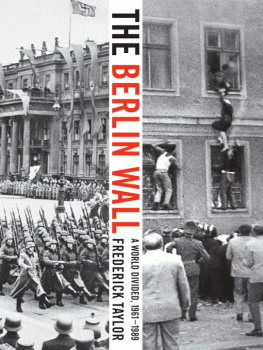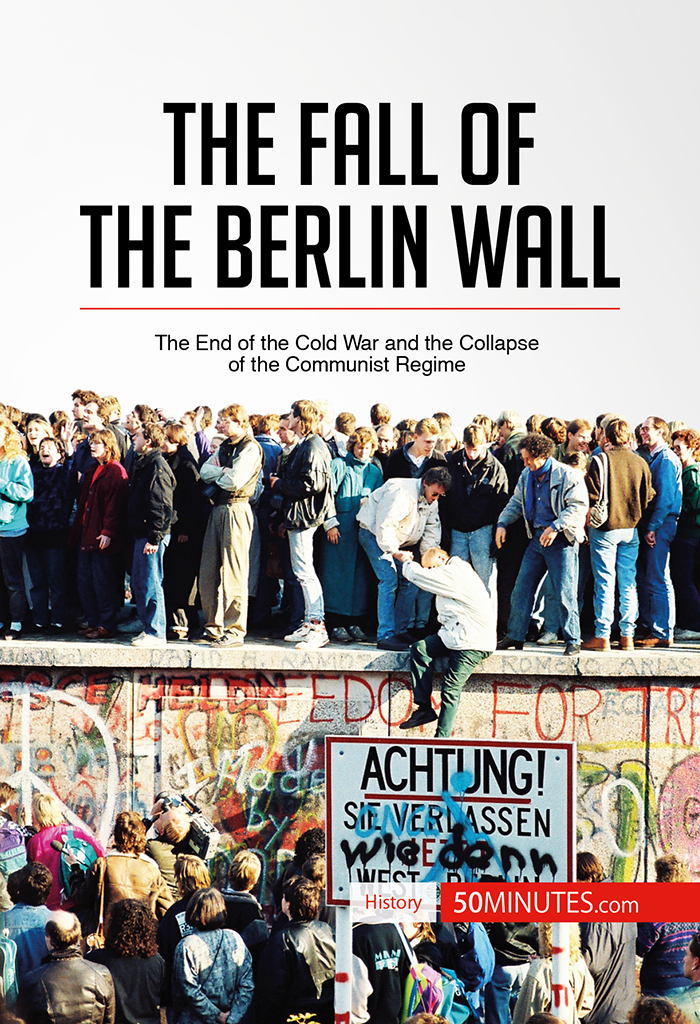The Berlin Wall was erected in August 1961 to cut off the Western part of the city from the surrounding Communist world. It was the unfortunate product of divisions in both Europe and Germany during the Cold War, which followed on from WWII (1939-1945). It also stemmed from the stringent Communist regime which caused much of the population to flee. In autumn 1989 however, with severe economic problems in the USSR and the regime becoming less strict, an emerging hunger for democratisation spread across Eastern Europe. Finally, an entire population was to reclaim its freedom of movement and break through the most important symbol of the East-West divide.
On the evening of 9 November 1989, German media made a premature announcement that leaving East German territory had become unconditionally legal, taking immediate effect. The reaction was instantaneous - in the hours following the announcement, East Berlins population hurried towards the citys borders. The guards had not been warned, but they eventually let people through. In the space of one night, the Berlin Wall, a wall which had kept family and friends apart for 28 years, finally fell.
The fall of the Berlin Wall hugely accelerated a process which had already begun. The Soviet authorities non-response to the events in Berlin encouraged other Eastern Bloc populations to mobilise against Communist dictatorship, with protests being organised all over the Warsaw Pact countries. The power of this movement was so strong that in a few months time, all of Eastern Europe would be democratised.
Context
The Allies: Europes saviour
The year 1943 marked a significant turning point in WWII, when Allied forces began liberating Europe little by little. The Soviet Unions Red Army achieved their first victory over Nazi Germany at the Battle of Stalingrad (winter 1942-1943), and Anglo-American and French troops organised landings in Sicily (July 1943), Italy (September 1943) and France (June and August 1944).

The Yalta Conference attended by (from left to right) Winston Churchill, Franklin Roosevelt and Joseph Stalin.
At the Yalta Conference in February 1945, the Allies discussed reclaiming Germany and how they would manage the post-war situation there. They issued a declaration outlining plans for countries which had been freed from Nazi control to be gradually democratised through temporary coalition governments whose task was to organise free elections. Germany would also to pay the price for its indiscretions, with the Allies ensuring that it could never again become a warring power through demilitarisation, denazification and territorial occupation in four distinct zones, each of which was the responsibility of one power - France, Britain, America and the USSR. Berlin, the capital of the Third Reich as presided over by Hitler (German statesman, 1889-1945), was also divided into four sectors under Allied administration.
Did you know?
The mission to take back Nazi-occupied territories in Europe operated on two fronts - by the Soviets in the East and the Anglo-Saxon Allies in the West. On 25 April 1945, the two armies came together in Tora on the banks of the Elbe, several hundred kilometres west of Berlin. This town would soon find itself at the heart of Soviet-occupied Germany.
At the Yalta Conference and the Potsdam Conference (July-August 1945) which took place after Germanys surrender (8 May 1945), early signs of discord between the Western Allies and the Soviet Union were visible; the end of the war equally marked the end of the Grand Alliance.
Bisecting Berlin, Germany and Europe
The commitments agreed upon at the Yalta and Potsdam conferences with regards to liberated European territories were soon to be breached by the USSR, which instead began installing Communist dictatorships in the eight Central and Eastern European countries which it had liberated from Nazi control and over which it now had authority. The countries were: Hungary, Bulgaria, Romania, Poland, Czechoslovakia, Yugoslavia, Albania and the German Democratic Republic (or the GDR, which was formally recognised in 1949). They became Moscows satellite states.
Europe became quickly divided along ideological, political and economic lines. Churchill (British statesman, 1874-1965) coined the term Iron Curtain in 1946 during a speech in Fulton, Missouri to describe this palpable divide. These divisions were the key factors constituting the Cold War, which saw the worlds two super powers - the USA and the USSR - oppose one another for 45 years.
The Cold War
After WWII had drawn to a close, the Soviet Union and America rapidly became rivals. The two powers championed ideologies and political and economic principles which were fundamentally opposed - capitalist democracy in the USA and Stalinist communism in the USSR. Both states fought to broaden their spheres of influence through offering financial aid to their supporters and forming military alliances. The Americans put in place the Marshall Plan (1947) and NATO (North Atlantic Treaty Organisation - 1949), while the Soviets established the Warsaw Pact (1955) and Comecon (Council for Mutual Economic Assistance, 1949). While there was no physical combat between the two powers, their fierce rivalry took a more dangerous form, leading each state to try to assert and exhibit its military and scientific prowess in the form of the arms race and the space race.
While several Eastern European countries had fallen fully into the Soviet sphere of influence, it was the GDR and above all Berlin which truly epitomised this new separation. In West Berlin and the whole of West Germany, a democratic system was in place, whereas East Berlin and the whole GDR were under Communist dictatorship. Many East Germans tried to move westward where conditions were better. However, this massive exodus which peaked in times of crises posed a threat to the GDRs economy, based on central planning.
Half a million people crossed the East-West Berlin border daily. It had 81 transit points, with 90% of those crossing the border using these as a definitive way out. The GDRs leader Walter Ulbricht (1893-1973) received permission from Soviet leader Nikita Khrushchev (1894-1971) to construct a major border-control apparatus around West Berlin, which was framed as a rampart against Western fascism by the authorities.



















